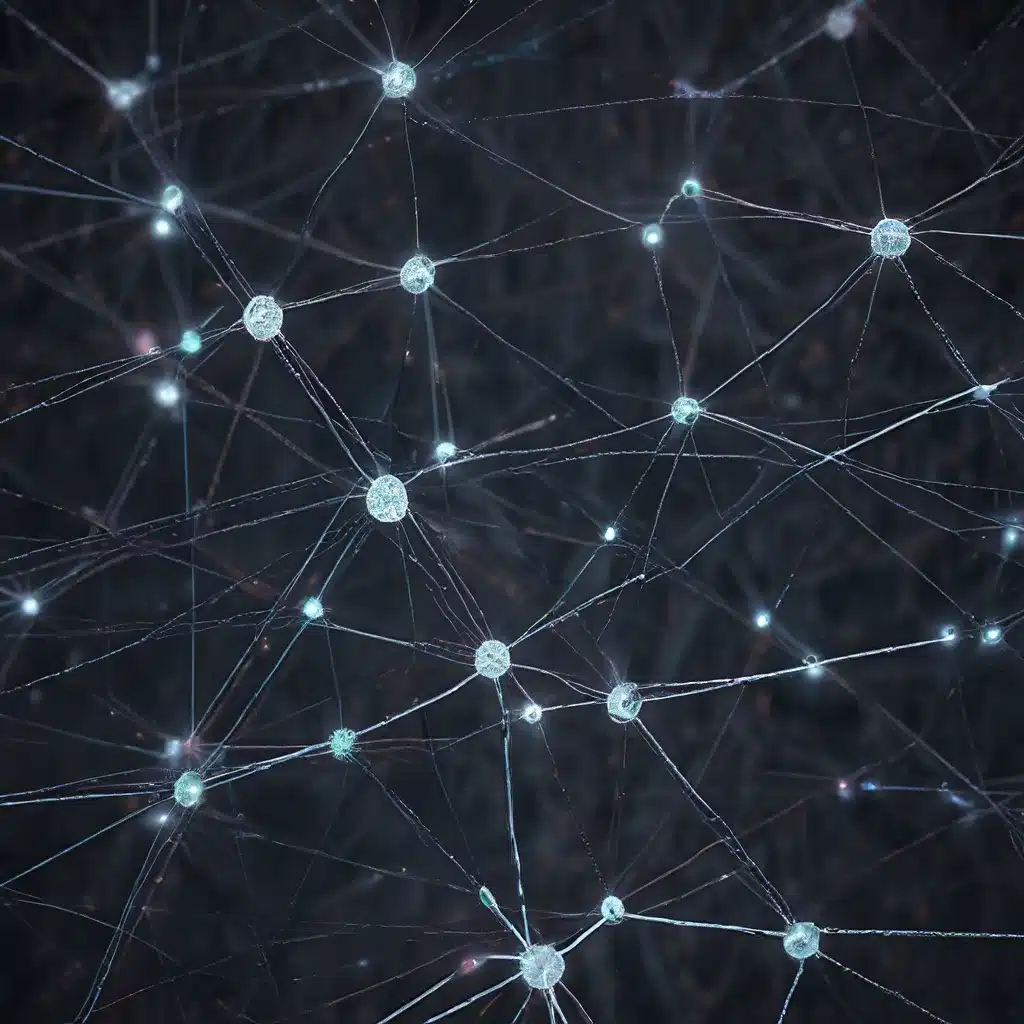
Sensor Networks and the Rise of IoT
Sensor networks have become a pivotal component of the Internet of Things (IoT), enabling the collection and exchange of vast amounts of data across a wide range of applications. From smart homes and cities to industrial automation and environmental monitoring, these interconnected networks of sensors are revolutionizing how we interact with and understand the world around us. Sensor-networks.org is a leading resource for professionals, researchers, and enthusiasts interested in exploring the latest advancements in this rapidly evolving field.
As the IoT ecosystem expands, the efficient operation and management of sensor networks have become increasingly crucial. Energy consumption is a critical concern, as sensor nodes are often deployed in remote or hard-to-reach locations, making frequent battery replacements impractical and costly. Consequently, the development of energy-efficient algorithms and protocols has become a primary focus for researchers and engineers working in the sensor network domain.
Distributed Algorithms for Energy Management
One of the key challenges in sensor network design is optimizing energy consumption while maintaining the network’s overall performance and reliability. Distributed algorithms have emerged as a promising approach to address this challenge, offering several advantages over centralized management strategies.
Decentralized Decision-Making
Distributed algorithms enable sensor nodes to make autonomous decisions based on local information, reducing the reliance on a centralized control system. This decentralized approach offers several benefits:
- Scalability: Distributed algorithms can easily accommodate the addition or removal of sensor nodes without significantly impacting the overall network performance.
- Resilience: The network can continue to function even if individual nodes fail, as the decision-making process is not dependent on a single point of failure.
- Adaptability: Distributed algorithms can dynamically respond to changes in network conditions, such as node movement or environmental variations, without the need for centralized intervention.
Energy-Aware Routing Protocols
One of the primary applications of distributed algorithms in sensor networks is the development of energy-aware routing protocols. These protocols aim to optimize the energy consumption of the network by intelligently routing data through the most efficient paths, considering factors such as:
- Remaining battery life: Prioritizing the selection of nodes with higher remaining battery levels to prolong the network’s overall lifetime.
- Transmission distance: Minimizing the distance between communicating nodes to reduce the energy required for data transmission.
- Network traffic load: Balancing the distribution of data traffic to avoid overloading specific nodes and draining their batteries prematurely.
By employing these energy-aware routing strategies, distributed algorithms can significantly extend the operational lifetime of sensor networks, making them more sustainable and cost-effective.
Duty Cycling and Sleep Scheduling
Another crucial aspect of energy management in sensor networks is the duty cycling and sleep scheduling of sensor nodes. Distributed algorithms can play a vital role in coordinating the sleep and active states of nodes, ensuring that:
- Nodes are active only when necessary: Sensor nodes can enter a low-power sleep mode when not actively sensing or transmitting data, reducing overall energy consumption.
- Synchronization is maintained: Distributed algorithms can synchronize the sleep and active cycles of neighboring nodes, enabling efficient data exchange and coordination without losing network connectivity.
- Fairness is achieved: The algorithms can ensure an equitable distribution of the energy burden among sensor nodes, preventing the premature depletion of individual nodes.
By leveraging these distributed techniques, sensor networks can achieve significant energy savings while maintaining reliable and responsive data collection and communication.
IoT Applications and Security Challenges
The proliferation of sensor networks has enabled a wide range of IoT applications, transforming various industries and sectors. From smart city initiatives that monitor traffic, air quality, and public infrastructure to precision agriculture systems that optimize water and resource usage, sensor networks are at the forefront of these technological advancements.
However, as sensor networks become more pervasive, the security and privacy challenges associated with IoT have also come to the forefront. Distributed algorithms can play a crucial role in addressing these concerns, providing:
- Decentralized Authentication: Distributed algorithms can implement peer-to-peer authentication mechanisms, verifying the identity of sensor nodes without relying on a central authority, reducing the risk of single points of failure.
- Distributed Intrusion Detection: By leveraging the collective intelligence of sensor nodes, distributed algorithms can detect and respond to potential security threats in a more robust and adaptive manner, compared to traditional centralized security approaches.
- Secure Data Aggregation: Distributed algorithms can enable secure data aggregation, where sensor nodes collaborate to process and consolidate data in a way that preserves the confidentiality and integrity of the information, even if individual nodes are compromised.
Conclusion: The Future of Sensor Networks and Energy Efficiency
As the IoT ecosystem continues to evolve, the importance of sensor networks and their efficient operation will only grow. Distributed algorithms have emerged as a crucial enabler, providing scalable, resilient, and adaptable solutions for energy management, security, and application-specific optimization in sensor networks.
By leveraging the power of distributed computing, sensor networks can unlock new possibilities in various domains, from smart cities and industrial automation to environmental monitoring and healthcare. As researchers and engineers continue to push the boundaries of sensor network technology, the impact of these advancements on our lives and the environment will become increasingly profound.